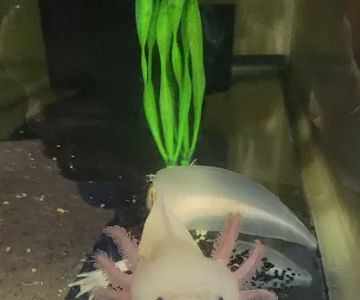How to Train a Dog to Be Comfortable with Grooming
As a dog owner, one of the biggest challenges I faced was getting my dog comfortable with grooming. For some dogs, grooming can be a stressful experience, causing anxiety and making it difficult to maintain their coat. But through training, patience, and a few helpful techniques, I was able to turn grooming into a positive experience for my dog. If you're wondering how to train your dog to be comfortable with grooming, you're in the right place. Let me share my experience and some useful tips to make grooming easier for both you and your furry friend.
1. Understanding Why Dogs Dislike Grooming
Before diving into the training process, it's important to understand why some dogs are hesitant or fearful of grooming. In my experience, dogs often associate grooming with discomfort, especially if they have had a negative experience in the past, such as being brushed too roughly or having their nails clipped too short. Additionally, dogs can be sensitive to being handled in certain areas of their body, such as their paws, ears, or face. By understanding these factors, we can approach the training process with empathy and patience.
1.1 Common Grooming Fears
From my time training dogs, I noticed that common fears include the sound of clippers or scissors, the sensation of being brushed, and the restraint that comes with being groomed. Dogs can also feel vulnerable when placed on a grooming table or confined to a space. If your dog is showing fear, it's crucial to break the grooming process down into smaller, manageable steps, making it a gradual and stress-free experience.
2. Getting Your Dog Used to Being Touched
The first step in training your dog to be comfortable with grooming is to get them used to being touched in sensitive areas. In my case, I began by gently touching my dog’s paws, ears, and tail, using positive reinforcement like treats and praise when they stayed calm. The key here is to build trust and create positive associations with handling. It’s important to go slow, ensuring your dog is comfortable before moving on to more invasive grooming tasks.
2.1 Gentle Touching Exercises
Start by sitting with your dog in a calm environment and gently touching their paws, ears, and other sensitive areas. Reward them immediately with a treat and verbal praise when they remain calm. Repeat this process regularly, gradually increasing the amount of time you spend touching them. Once your dog gets comfortable with basic touching, you can move on to introducing grooming tools.
3. Introducing Grooming Tools Slowly
Introducing grooming tools, such as brushes, nail clippers, and scissors, can be intimidating for dogs. I learned that it's essential to introduce these tools slowly and associate them with positive experiences. I started by letting my dog sniff the brush or clippers without using them. After a few days, I would gently touch them with the tool and reward my dog for staying calm. Over time, they began to understand that the tools weren’t a threat.
3.1 The Power of Positive Reinforcement
Positive reinforcement is the most effective technique I used during training. Every time my dog stayed calm during an introduction to a grooming tool, I rewarded them with their favorite treat or a lot of praise. This helped my dog form a positive association with the grooming process. With each successful interaction, I could see that my dog became more comfortable with the grooming tools, and the anxiety they once felt started to fade away.
4. Desensitizing to Grooming Sounds
Some dogs are afraid of the sounds associated with grooming, such as the buzzing of clippers or the sound of nail clippers cutting. When I first started grooming my dog, the sound of the clippers would cause them to retreat. To address this, I began desensitizing my dog to the sound. I would turn the clippers on at a distance while providing treats and praise for remaining calm. Over time, my dog became less sensitive to the noise and more accustomed to the sound of the clippers near their ears.
4.1 Using Low-Noise Grooming Tools
If your dog is particularly sensitive to noise, consider using low-noise grooming tools that won’t startle them. There are many options available that are designed to be quieter while still providing effective grooming results. These tools helped reduce my dog’s anxiety and made the grooming experience much more enjoyable for both of us.
5. Nail Trimming and Other Sensitive Areas
Nail trimming is one of the most common grooming tasks that many dogs find challenging. I initially struggled with this because my dog was terrified of having their nails touched. To solve this, I introduced the nail clippers gradually, starting with simply letting my dog sniff the clippers and rewarding them for staying calm. Over time, I was able to trim a single nail at a time, rewarding my dog with treats after each successful attempt. Patience is key when it comes to nail trimming, so take your time and go at your dog’s pace.
5.1 Gradual Introduction to Nail Trimming
To make nail trimming less stressful, I recommend starting with one paw at a time. Begin by touching the paw gently, then reward your dog. Gradually introduce the clippers, rewarding your dog for calm behavior. Only trim a small amount at a time, and be sure to stop if your dog shows signs of anxiety. With repeated practice, your dog will become more comfortable with having their nails trimmed.
6. Consistency is Key
The most important thing I learned in training my dog to be comfortable with grooming is consistency. Grooming should become a regular part of your dog’s routine, just like feeding and exercise. I made it a point to handle my dog’s paws, ears, and other sensitive areas every day, even if we weren’t grooming them. This constant exposure helped my dog get used to the process and made them feel more secure during grooming sessions.
6.1 Setting a Routine
Setting a grooming routine is essential for maintaining progress. I found that grooming my dog at the same time each week helped them understand that it’s just a normal part of their life. As my dog got more comfortable, I began extending the grooming sessions and using more advanced tools like the nail clippers or a blow dryer. With each grooming session, my dog became more relaxed and accustomed to the process.











